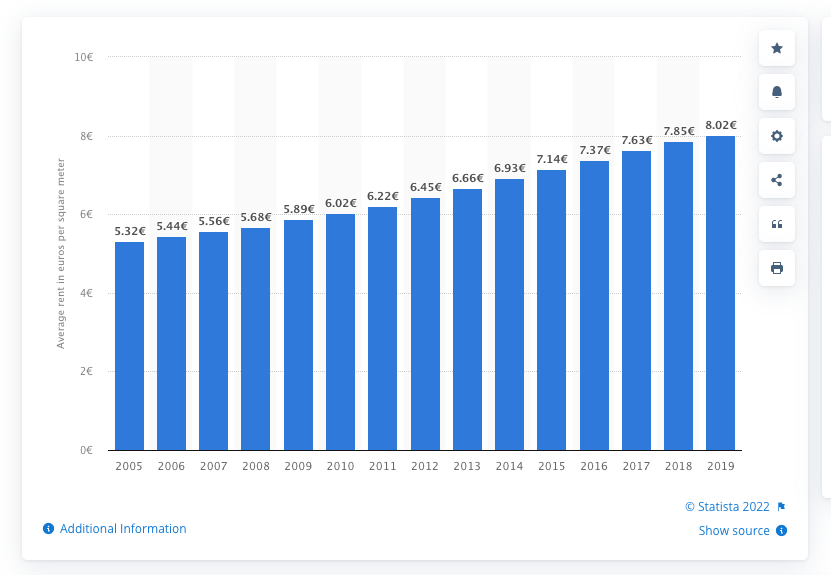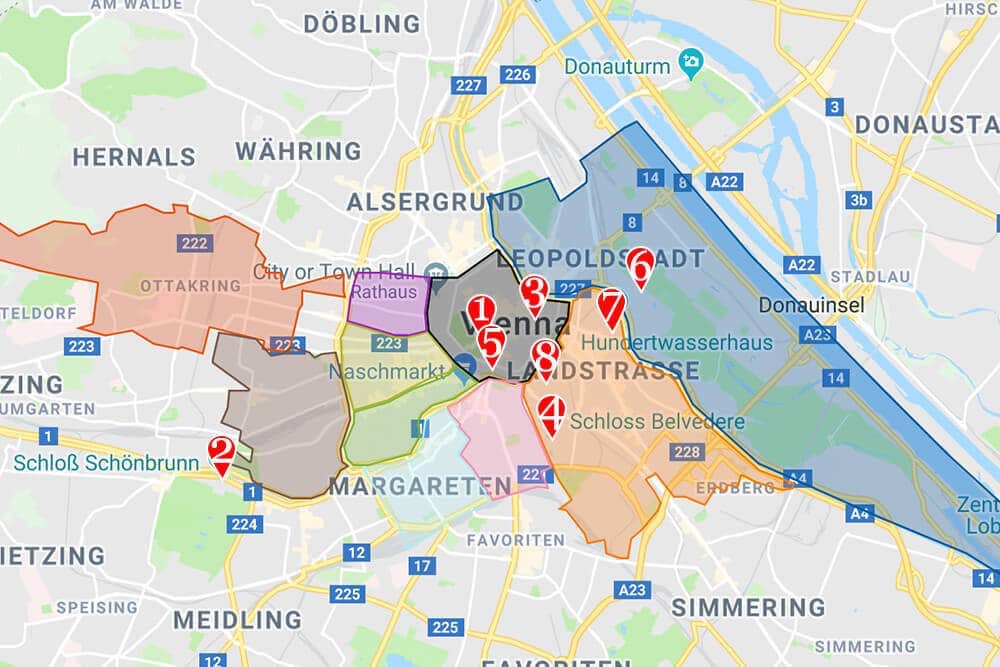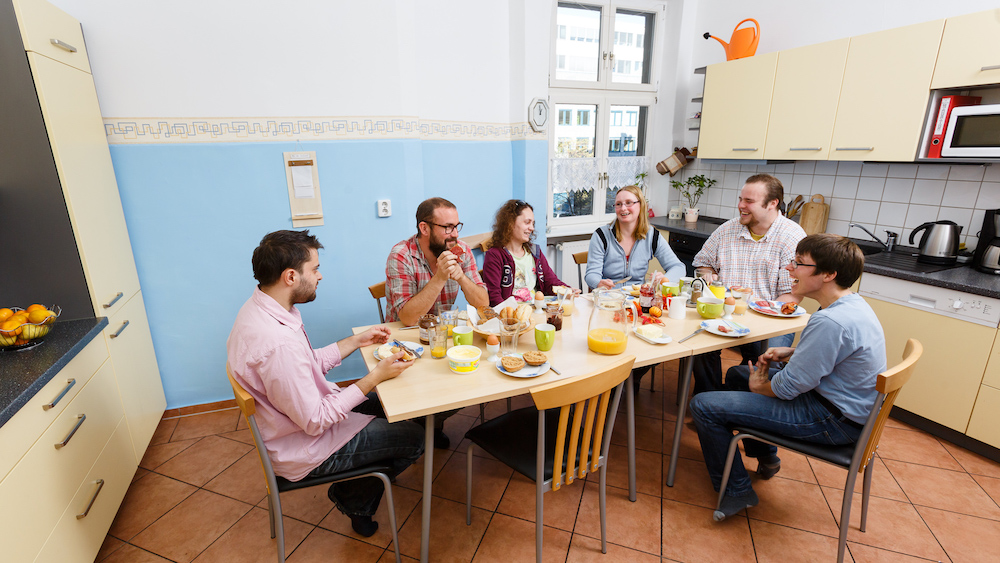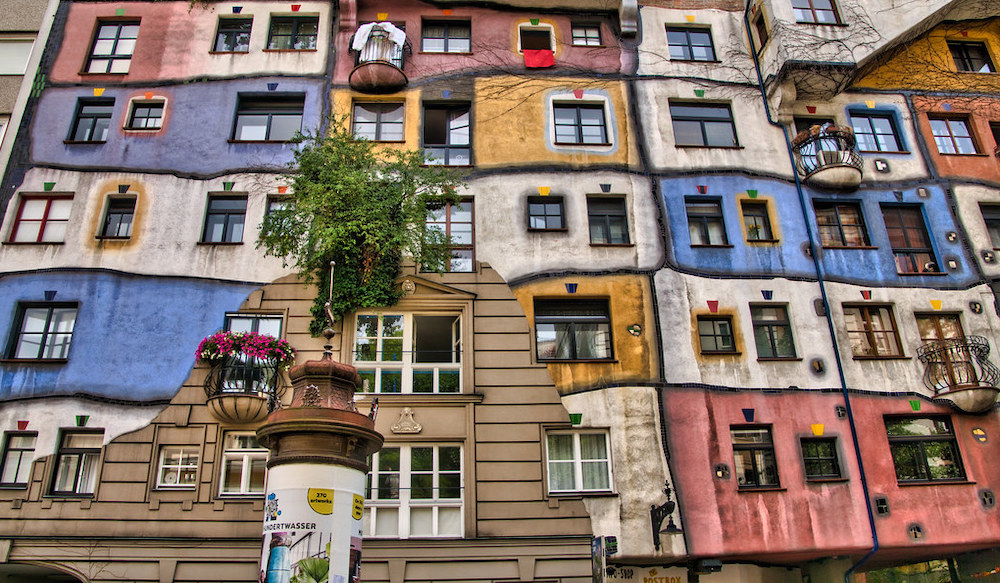In Vienna, it’s the calm amidst a crisis. As many residents of European cities know well, there is a chronic shortage of affordable living space in many cities across the continent. With more than 220 million households across the European Union, cities are struggling to keep up with the 82 million residents who cannot afford their housing costs or simply cannot find places to live. The charm and beauty of old cities and quaint, cobble-stoned centres now does little to address the fact that 44 percent of housing in the EU was built before 1980, and struggles to keep up with safety codes or compensate for the gradual but constant population growth demonstrated in recent history.
With 50 million more people living throughout the continent since the 1980’s, it has become difficult to find affordable places to move within the cities and urban centres.

However, the good news is that Vienna has managed to avoid many of these problems. In my experience living in the city and talking with other friends and foreigners over the past few years, it has remained a slight challenge to find an affordable place to live but has not descended into the frustrating impossibility that many other European residents have to deal with.
However, like the trend of the world in general, things are getting more expensive. The average rent has increased 10 percent between 2018 and 2019 and continues to rise. The average living space in Vienna is approximately 100 meters2, for which one can expect to pay between 450 euros and 600 euros per month on average, depending on the district.
For small studio apartments in cheaper parts of town, rent can still be as low as 390 euros per month, but that is, unfortunately, changing fast!
If you are flexible and willing to move a little farther out from the centre, Vienna remains a haven in a storm of European housing chaos.
Districts and Distances
The benefit of living in Vienna is that the prices and availability of housing vary drastically depending on which part of the city you live in. Of course, if you wish to live centrally (close to the hub of finances, culture and social life), rents are considerably higher. But one of the nicest things about living in Vienna is the unique and characteristic neighbourhoods which are divided by the cities bezirk, or districts. It is also an incredibly easy city to commute, as trams, trains and bus lines are networked all across the city with very short running times. (I am shocked if I have to wait more than five minutes for a tram or bus.)

Below I have highlighted some of the nicest and more affordable parts of the city for those looking for an apartment not too far from the centre and where you don’t spend your whole salary on rent. The greatest benefit of living here, in my opinion, is the large amount of green space; more than 50 percent of the land in Vienna is dedicated to parks and natural environments. This means that it is one of the greenest cities with more than a million inhabitants in the whole world. No matter what district you find yourself living in, there is never a park, field or forest far from your door.
The districts in Vienna are arranged counter-clockwise around the central 1st district (approximately!) in a spiral pattern, which means that when you are looking for places to live, any district in the single-digits is going to be relatively close to the centre.
Following below are some of my favourite and affordable districts:
Leopoldstadt – 2nd District
One of the most central districts, Leopoldstadt has the benefit of being across the Danube Canal from the 1st District on one side and running along the Danube River on the other. Filled with cultural centres and plenty of restaurants and cafes, Leopoldstadt also boasts the convenience of one of the main train stations (Praterstern) and the largest park in the city (the Prater). It’s so large that exploring and cycling around in the park can really feel like leaving the city. It also has easy access to Danube Island, one of the best places to swim and relax in the summer.
Favoriten – 10th District
Although a little farther away from the centre of the city, Favoriten has lots of open space and a newer generation of apartment buildings and houses. There is easy access to the countryside and vineyards to the south, and it’s home to the famous Oberlaa thermal hot springs, if you are looking for a warm place to relax in the winter.
Ottakring – 16th District
Ottakring is one of my favourite districts and is becoming increasingly popular. The rents have remained low due to a more working-class and international demographic population. But is still extremely close to the centre with tram rides rarely taking more than 10 minutes to the centre. Packed with cool venues and cafes, international food markets and pressed up against the western hills of the Vienna woods, the district has a lot to offer. One of the best parts of Ottakring is the atmosphere of diverse nationalities and cultures, making it feel like the most international area in a city that often feels fairly uniform. It doesn’t hurt that it is also home to Ottakringer Brauerei, Vienna’s largest brewery.
Donaustadt – 22nd District
Although I have not spent much time in Donaustadt, many residents are moving there for larger apartments at lower prices. Located on the other side of the Danube, this district is more removed from the central areas but is easily and quickly accessible by local train lines. As it is on the outskirts, it is also the best place for a more rural and quiet atmosphere and has plenty of parks and space for families. It is also home to the Lobau National Park, a large area of preserved land with forests, marshes and the lower part of Vienna’s Danube river.
Please remember that every district has something great to offer, whether you are a family, student or just living the single life! Each area has its own characteristic qualities and benefits. I have only included the nicer and cheaper districts above!

Options and offers
Of course, the affordability of any city depends on your finances, priorities and lifestyle. As Vienna has a large student population, it remains a city that is still fairly easy to find student housing.
For those who would rather live alone, there is a selection of cheaper studio apartments around the city. But for those younger (or more adventurous) residents, it is still common to live in shared apartments or houses called WGs, or wohngemeinschaften. This is a great option for people who are more interested in communal living or saving a bit of money for a while, and if you find a supportive and community- minded group of people, it can be a wonderful experience.
I live in a large WG, and by working as a team and sharing a life together, we are able to afford a large amount space we couldn’t otherwise. There is a large network of websites that helps people find roommates, which I have listed below.
One of the least popular elements of renting and real estate in Vienna is the proliferation of private estate agents (or immobilienmakler), and it has become a treasure to find an apartment or house listed with provisionfrei. The “provision” (or finder’s fee) from an agent can be upwards of two months’ rent, and these are becoming more and more common at all levels of real estate and rentals.
As many agents use the public websites listed below on which to post their rental listings, it can sometimes feel unfair to pay a company 700 euros to 1,000 euros for simply posting an apartment online. So, if you’re looking for an apartment in Vienna and find it listed as provisionsfrei, you’re in luck!
Take it!
Vienna has many options for housing and apartment rentals. In a city that is still slightly cheaper than other European capitals and has green space and parks in every district, it is possible to find something beautiful and affordable without being too far from the centre. The varying characteristics of the districts, amazing transportation and variety of options make it a city where moving, relocating or upgrading can still inspire.
To aid in that inspiration, I have listed some of the most useful rental websites below. Good luck and happy hunting!
Useful websites:
For general rentals –
• immowelt
For apartments without a “provision” or agent fee –
For shared apartments or houses –
• wg-gesucht

About the author:
Thom Harding was born and raised in the UK and USA, sharing his time between Bath and Boston. Upon completing his studies in Art History and Painting in Florence, Thom travelled around Mexico and India before moving to New Mexico to start his career as a Primary school teacher.
After completing his MA in Education, he now lives and works in Vienna, Austria and enjoys spending his free time hiking, reading, travelling and exploring around Europe.
See more of Thom’s work here in the Dispatches archive.
You can read more about Vienna here in the Dispatches archives.
Thom Harding was born and raised in the UK and USA, sharing his time between Bath and Boston. Upon completing his studies in Art History and Painting in Florence, Thom travelled around Mexico and India before moving to New Mexico to start his career as a Primary school teacher.
After completing his MA in Education, he now lives and works in Vienna, Austria and enjoys spending his free time hiking, reading, travelling and exploring around Europe.
See more of Thom’s work here in the Dispatches archive.
You can read more about Vienna here in the Dispatches archives.















